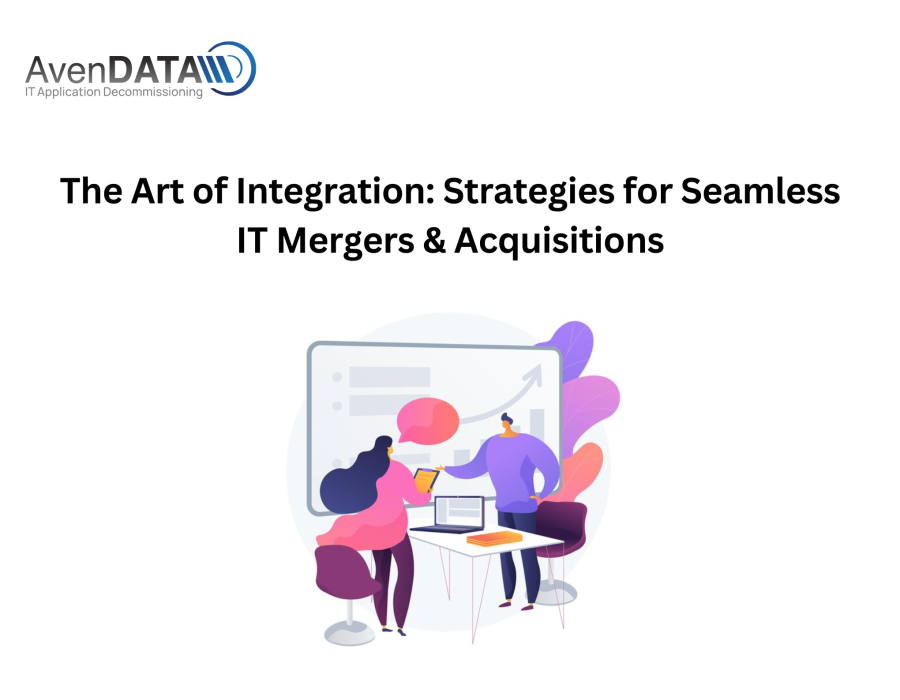The process of integrating IT systems and operations following mergers and acquisitions (M&A) represents a critical phase in realizing the strategic objectives and synergies of the combined entities. The art of integration in IT M&A demands meticulous planning, strategic alignment, and a focus on seamless transitions that minimize disruption and maximize the value of the consolidated organization. In this blog, we will delve into the strategies for achieving seamless IT integration in M&A, offering insights into best practices, challenges, and the art of harmonizing diverse IT ecosystems to drive operational efficiency and innovation.
Strategic Alignment and Vision: The art of integration begins with strategic alignment and a clear vision that outlines the desired outcomes of the M&A transaction. Organizations must articulate a comprehensive IT integration strategy that aligns with overarching business objectives, operational priorities, and the realization of synergies. By establishing a shared vision for IT integration, stakeholders can navigate the complexities of consolidating IT systems, applications, and processes with a unified purpose and strategic direction.
Comprehensive Due Diligence: Thorough due diligence is essential in understanding the IT landscape, infrastructure, and digital assets of the target organization. A comprehensive assessment of IT systems, data architecture, cybersecurity protocols, and technology capabilities provides critical insights that inform the integration strategy. By conducting meticulous due diligence, organizations gain a deeper understanding of the opportunities, challenges, and risks associated with integrating diverse IT environments, paving the way for informed decision-making and effective planning.
Prioritization of Core Systems and Data: In the art of integration, prioritizing core IT systems and data assets is paramount to ensuring a seamless transition. Identifying mission-critical applications, data repositories, and IT infrastructure that underpin essential business functions allows organizations to focus their integration efforts on preserving operational continuity and minimizing disruptions. By prioritizing core systems and data, organizations mitigate the risks of integration complexities and prioritize the stability of foundational IT elements.
Harmonization of IT Architectures: The art of integration involves harmonizing disparate IT architectures, software platforms, and data structures to create a unified and interoperable IT ecosystem. This process demands a strategic approach to rationalizing applications, standardizing technology stacks, and optimizing data interoperability. By harmonizing IT architectures, organizations lay the foundation for seamless data exchange, streamlined processes, and enhanced collaboration across the integrated entity.
Agile Transition Planning: Agile transition planning is essential for orchestrating the seamless integration of IT systems and operations. Organizations should adopt agile methodologies for managing the transition, encompassing iterative development, continuous testing, and adaptive project management. An agile approach enables organizations to respond to evolving integration challenges, stakeholder feedback, and changing business requirements, fostering flexibility and resilience in the integration process.
Change Management and Communication: Effective change management and communication are integral to the art of integration, ensuring that stakeholders are engaged, informed, and prepared for the changes resulting from IT integration. Clear and transparent communication about integration timelines, impacts, and benefits fosters organizational alignment and minimizes resistance to change. By implementing robust change management practices, organizations can navigate cultural shifts, operational adjustments, and skill development needs that accompany IT integration.
Data Security and Compliance: The art of integration necessitates a proactive approach to data security and compliance to safeguard sensitive information and uphold regulatory requirements. Organizations must prioritize data protection, privacy, and regulatory compliance throughout the integration process, implementing robust security protocols and governance frameworks. By embedding data security and compliance measures into the integration strategy, organizations mitigate the risks of data breaches, regulatory violations, and reputational harm.
Continuous Performance Monitoring: Continuous performance monitoring and evaluation are essential for assessing the effectiveness of IT integration efforts and identifying opportunities for improvement. Organizations should establish key performance indicators (KPIs) related to IT integration, such as system uptime, data quality, user satisfaction, and operational efficiency. Regular monitoring and analysis of these KPIs provide actionable insights that inform ongoing optimization and refinement of the integrated IT environment.
Conclusion: The art of integration in IT mergers and acquisitions demands strategic alignment, comprehensive due diligence, prioritization of core systems and data, harmonization of IT architectures, agile transition planning, change management and communication, data security and compliance, and continuous performance monitoring. By embracing these strategies, organizations can navigate the complexities of IT integration with precision, vision, and adaptability, fostering seamless transitions that maximize the value of M&A transactions and position the integrated entity for sustained growth and innovation in the digital age.
#AvenDATA #legacysystems #ITlegacysystems #ITmergers #ITAcquisitions #mergersandacquisitions #datamigration






Comments